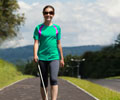A recent study suggests that face blindness may affect 3 percent of the population
- Prosopagnosia, commonly known as face blindness, is a disorder in which you have difficulty recognizing the faces of others
- Study suggests that face blindness lies on a continuum and may be more common than currently believed
- As many as 1 in 33 people may meet the criteria for face blindness: 1 in 108 have major prosopagnosia while 1 in 47 have mild prosopagnosia
Face Blindness may be more Common than what you See
Published in Cortex, the study findings indicate that as many as one in 33 people (3.08 percent) may meet the criteria for face blindness, or prosopagnosia. This translates to more than 10 million Americans, the research team said.The study found similar face-matching performance between people diagnosed with prosopagnosia using stricter vs. looser criteria. This suggests that diagnostic criteria should be expanded to be more inclusive. That could lead to new diagnosis among millions who may have the disorder but are not able to realize it.
Face Blindness Lies on a Spectrum
In the new study, led by Joseph DeGutis, HMS associate professor of psychiatry at VA Boston, the researchers found that face blindness lies on a spectrum — one that can range in severity and presentation - rather than representing a discrete group. The researchers also provide diagnostic suggestions for identifying mild and major forms of prosopagnosia based on guidelines for major and mild neurocognitive disorders in the DSM5, the 5th edition of the Diagnostic and Statistical Manual of Mental Disorders.The study results are based on a web-based questionnaire and tests administered to 3,341 individuals. First, the researchers asked participants whether they experience difficulties recognizing faces in their everyday lives. Then they administered two objective tests to determine whether they had difficulties learning new faces or recognizing highly familiar, famous faces.
The results showed that 31 individuals out of the 3,341 had major prosopagnosia, while 72 of the 3,341 had a milder form. The researchers also observed that there were no neatly divided discrete groups of people with poor or good ability to recognize faces. Rather, the ability to recognize faces appeared to lie on a continuum, they said.
Finally, the researchers compared face-matching scores among people with prosopagnosia diagnosed using different criteria and found that using stricter diagnostic cutoffs did not correspond with lower face-matching scores.
Causes of Face Blindness
Prosopagnosia, or face blindness, can be caused by a brain injury to occipital or temporal regions, referred to as acquired prosopagnosia, which affects one in 30,000 people in the United States. Prosopagnosia can also be a lifelong disorder caused by genetic or developmental defects, which affects one in every 33 persons.Impact of Face Blindness on Social Interactions
Face blindness can be a socially debilitating disorder which can limit employment opportunities. For example, networking is extremely difficult for people with prosopagnosia and can cause social distress and embarrassment. Recognizing someone is a social signal, which indicates that they are important to you.Prosopagnosia can also affect individuals on the autism spectrum and can be a consequence of age-related cognitive decline as well. In a world where social isolation is on the rise, especially in teens and young adults, fostering and maintaining social bonds and good face-to-face interactions are more important than ever.
Humans are remarkably good at recognizing familiar faces and this is done with very little effort. It is known that this face ‘super-power’ relies on several specific perceptual processes: holistic face processing-seeing the face as an integrated whole, for instance; memory processes, readily associating faces with person-related knowledge; and specialized brain mechanisms and regions, too, such as the fusiform face area.
The knowledge about face recognition in unimpaired individuals provides a very solid framework to understand the ways these processes can break down in prosopagnosia. The processes also provide clues on how to improve face recognition in people with face blindness.
Expansion of Diagnostic Criteria for Face Blindness
Usually researchers use overly strict diagnostic criteria and many individuals with significant face- recognition problems in daily life have been wrongly told they do not have prosopagnosia. Expanding the diagnosis is important because knowing that you have real objective evidence of prosopagnosia, even a mild form, can help you take steps to reduce its negative impacts on daily life, such as telling consequential coworkers, or seeking treatment.Recent evidence suggests that people with milder forms of face blindness may benefit more from certain treatments than people with more severe forms of the condition. These treatments might include cognitive training to enhance perceptual abilities or training aimed directly at improving face associations.
Finally, factors such as age-related cognitive decline and social anxiety can further worsen face recognition abilities. Knowing if you have mild prosopagnosia could help you keep an eye out for further situational or age-related declines in face-recognition ability.
Prosopagnosia lies on a continuum and stricter vs. looser diagnostic criteria employed in prosopagnosia studies in the past 13 years have identified mechanistically very similar populations, providing justification for expanding the criteria to include those with milder forms of it.
Reference:
- What is the prevalence of developmental prosopagnosia? An empirical assessment of different diagnostic cutoffs - (https://www.sciencedirect.com/science/article/abs/pii/S0010945223000138)
Source-Medindia













